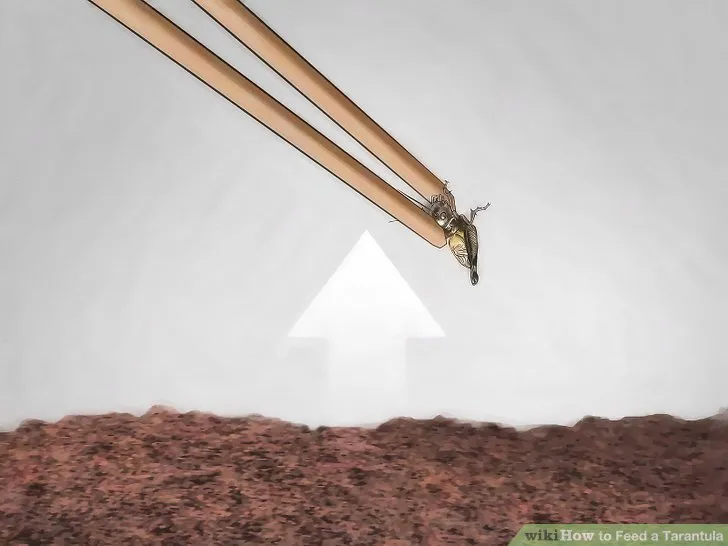Bringing a baby tarantula into your home is an exciting experience. These fascinating creatures require specific care, with feeding being one of the most critical aspects. This guide will walk you through everything you need to know about how to feed a baby tarantula effectively, ensuring it thrives and grows into a healthy adult. From understanding their dietary needs to setting up a proper feeding schedule, we will cover all the essentials. Get ready to become a baby tarantula feeding expert!
What Do Baby Tarantulas Eat
Baby tarantulas, also known as spiderlings, are carnivores, meaning their diet consists primarily of other insects. Their nutritional requirements are very similar to those of adult tarantulas, but the size and type of prey must be adjusted. Understanding what constitutes a suitable diet is the first step in providing the best care for your pet. Baby tarantulas need a diet rich in protein to support their rapid growth and development. This is crucial during their early stages of life, ensuring they have the energy to molt and grow successfully. The correct diet also influences their overall health and longevity.
Understanding the Feeding Needs of Baby Tarantulas
Baby tarantulas have different feeding needs compared to their adult counterparts. Spiderlings have much smaller appetites and require smaller, more frequent meals. Their metabolic rate is also higher, which means they need to eat more often to support their growth. The frequency and size of meals should be carefully managed to avoid overfeeding or underfeeding. Overfeeding can lead to stress, while underfeeding can stunt growth. Also, the environmental conditions, such as temperature and humidity, play a role in their feeding habits. Warmer temperatures tend to increase appetite, while cooler temperatures can slow down their metabolism and feeding.
Size Matters Choosing the Right Prey
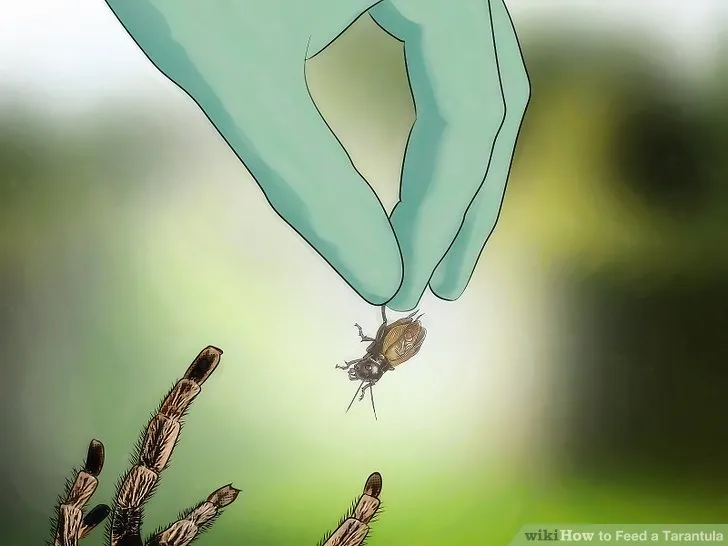
One of the most crucial aspects of feeding baby tarantulas is selecting the right size of prey. The rule of thumb is that the prey should be no larger than the tarantula’s abdomen. Feeding a spiderling prey that is too large can stress the tarantula, making it difficult for them to subdue and consume the food. This could even lead to injury or, in extreme cases, death. Conversely, prey that is too small won’t provide enough nutrients to support growth. Observe the baby tarantula closely when it is hunting or feeding. This will give you an idea of the prey size that is suitable. Adjusting the prey size as the tarantula grows is vital. Spiderlings grow at different rates, depending on various factors such as species, temperature, and feeding frequency.
Common Prey Options For Baby Tarantulas
Several types of prey are suitable for feeding baby tarantulas. When choosing, consider factors like nutritional value, ease of availability, and ease of care. Crickets and mealworms are among the most popular choices, but there are other options as well. Variety in diet can help ensure that the tarantula receives a wide range of nutrients. The key is to select prey that is easily digestible and provides a good balance of protein, fats, and other essential nutrients. Always ensure the prey is healthy and free from parasites or diseases.
Crickets for Baby Tarantulas
Crickets are a staple food for baby tarantulas and readily available at most pet stores. They are relatively easy to care for and provide a good source of protein. When feeding crickets to spiderlings, opt for pinhead crickets or small juveniles. These are the perfect size for baby tarantulas to handle. Before feeding, it’s crucial to gut-load the crickets. This involves feeding the crickets nutritious food like fresh vegetables, fruits, and commercial cricket food at least 24 hours before feeding them to your tarantula. This process enhances the nutritional value of the crickets, providing the tarantula with a more complete diet.
Mealworms for Baby Tarantulas
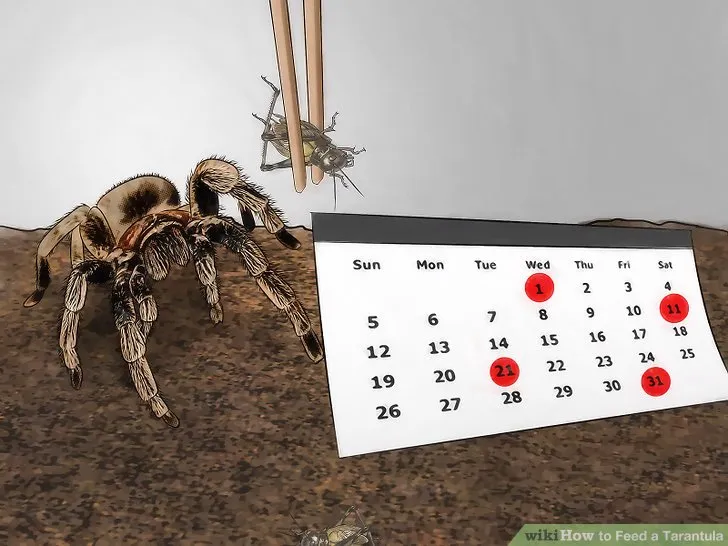
Mealworms are another excellent option for baby tarantulas. They are also easy to obtain and store. Mealworms are the larval stage of the mealworm beetle and are rich in protein. Select small mealworms for spiderlings. While mealworms are a good source of nutrients, they have a harder exoskeleton than crickets. Consider feeding your baby tarantula mealworms in moderation to avoid potential digestive issues. Gut-loading mealworms is equally important. Feed them nutritious food to enhance their nutritional content. Store mealworms in a cool, dark place with a substrate of bran or oats to keep them healthy and ready to feed your tarantula.
Other Prey Options You Can Consider
Beyond crickets and mealworms, there are other prey options to consider for your baby tarantula. Small roaches, such as Dubia roaches, are another good source of protein and nutrients, but they might be more difficult to obtain. Fruit flies, particularly flightless varieties, are also a good choice, especially for very small spiderlings. Always ensure the prey is safe and free from pesticides or diseases before feeding it to your tarantula. Variety in the diet can help provide a broader range of nutrients, contributing to a healthier and happier tarantula. Consider rotating between different prey types to ensure a balanced diet and to prevent boredom for the spider.
Setting Up a Feeding Schedule for Baby Tarantulas
Establishing a consistent feeding schedule is essential for the health and growth of your baby tarantula. The frequency of feeding depends on the age and size of the spiderling, as well as environmental factors like temperature. Younger spiderlings require more frequent feeding compared to older ones. As a general guideline, you can feed very young spiderlings every other day or every three days. Observe your tarantula’s abdomen to gauge whether it is well-fed. A plump abdomen typically indicates a well-fed tarantula, while a thin abdomen may indicate that it needs to be fed more often.
How Often to Feed Your Baby Tarantula
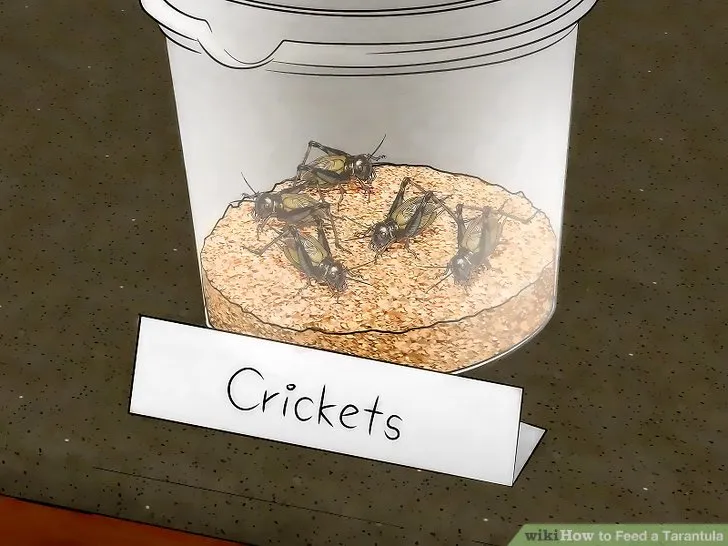
The frequency of feeding should be adjusted as your tarantula grows. As it molts and gets larger, you can gradually reduce the feeding frequency. Monitor the tarantula’s eating habits and adjust the schedule accordingly. If your tarantula consistently refuses food, it may be a sign that it is about to molt, or there may be other underlying issues. Make sure to remove any uneaten prey within 24 hours to prevent stressing your tarantula. Regularly check the enclosure for any signs of mold or pests that could affect the spider’s appetite or health. Maintain a consistent feeding schedule but always be flexible enough to adjust it based on the spider’s needs and behavior.
Best Practices for Feeding Baby Tarantulas
Follow some essential practices when feeding your baby tarantula. First, ensure the prey is of the appropriate size. Second, always gut-load the prey before feeding to increase its nutritional value. Third, use tongs or tweezers to offer the prey, especially for larger spiderlings, to avoid getting bitten. Fourth, make sure to remove uneaten prey within 24 hours to prevent them from stressing or potentially harming the tarantula. Keep the enclosure clean and maintain proper humidity and temperature levels to encourage healthy eating habits. Make sure to research the specific requirements of your tarantula species, as some species may have slightly different feeding requirements.
Removing Uneaten Prey
It is crucial to remove any uneaten prey from the enclosure within 24 hours. Uneaten prey can stress the tarantula, especially if it is a cricket that may bite or harass the spider. Leftover prey can also lead to mold or mites in the enclosure, which could affect the tarantula’s health. Regularly check the enclosure after feeding to remove any leftover prey. Use tongs or tweezers to remove the prey carefully. This simple practice is a key part of tarantula care. Regularly removing uneaten prey contributes to a cleaner and healthier environment for your spiderling.
Providing Water for Hydration
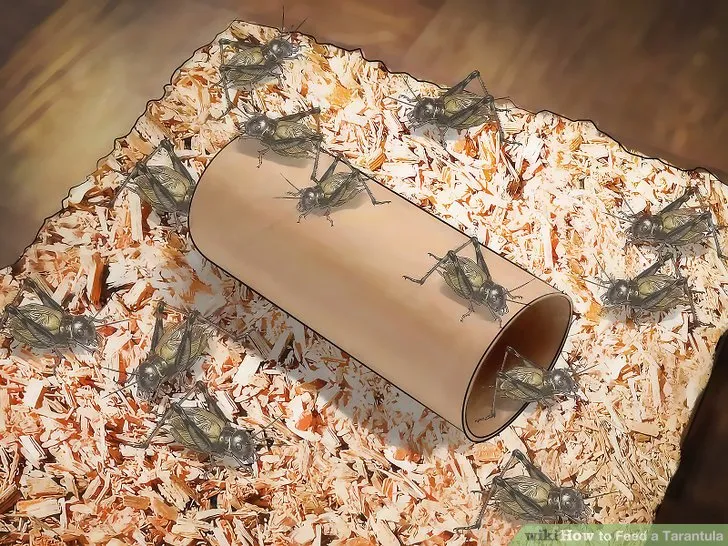
Baby tarantulas need a constant supply of fresh water to stay hydrated, supporting their overall health and helping them molt properly. Provide water in a shallow dish, such as a bottle cap or a small water dish designed for reptiles. Ensure the water dish is shallow enough to prevent the spiderling from drowning. Change the water regularly, ideally every day or every other day, to keep it clean and free from debris. In addition to a water dish, you can mist the enclosure lightly with water to maintain the required humidity levels, which is particularly important for tarantulas before they molt. Always use dechlorinated water or bottled water for your tarantula to prevent exposure to harmful chemicals.
Monitoring Your Tarantula’s Health
Regularly monitor your baby tarantula’s health to ensure it is thriving. Observe its behavior, activity levels, and overall appearance. A healthy tarantula is usually active, alert, and has a plump abdomen, indicating it is well-fed. Look for any signs of illness, such as lethargy, loss of appetite, or unusual behavior. Be familiar with the normal molting process, which is a natural part of tarantula growth. If you notice any concerning signs, consult a veterinarian or experienced tarantula keeper. Keeping track of the spider’s molting cycles can also provide insights into its growth and overall health.
Signs of a Healthy Baby Tarantula
A healthy baby tarantula typically exhibits several signs. It should be active and responsive to its environment. The abdomen should be plump and rounded, indicating that it is well-fed. It should eat regularly and have a good appetite. The colors should be vibrant and consistent with the species. During the molting process, the spider should appear healthy and show signs of pre-molt behavior, such as loss of appetite and a change in posture. If you notice any unusual behavior or changes in appearance, such as a shrunken abdomen, lack of appetite, or lethargy, it is essential to investigate the underlying causes and adjust the care as necessary. A healthy baby tarantula grows steadily and regularly molts.
Common Feeding Problems and Solutions
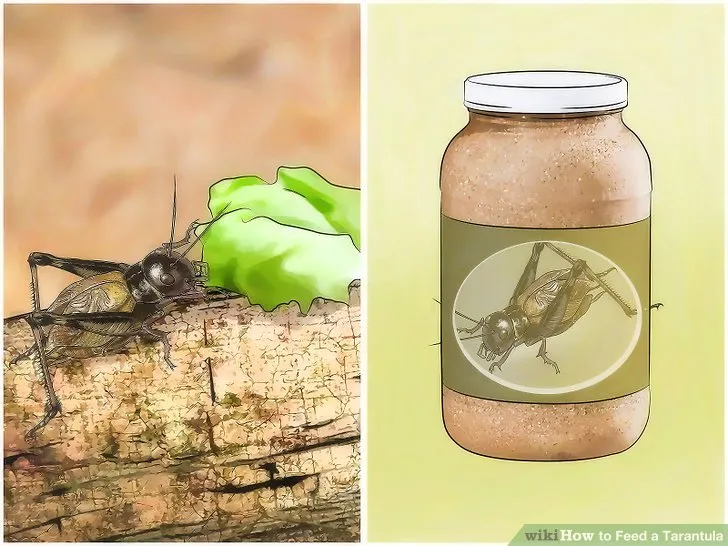
There are several common feeding problems that you may encounter when feeding a baby tarantula. One common issue is a loss of appetite. This can be caused by various factors, including stress, improper temperatures, or an impending molt. Ensure that the enclosure is at the correct temperature and that humidity levels are appropriate. Another common problem is overfeeding, which can lead to stress. Make sure to feed the tarantula the correct amount of food, and adjust the feeding frequency as the tarantula grows. If the spider consistently refuses to eat, it might be sick, or it could be a sign that the prey is not appealing, so you may want to switch the type of prey.
Baby Tarantula Refusing to Eat
If your baby tarantula refuses to eat, it could be due to a few reasons. The tarantula may be close to molting, a process during which they typically stop eating. Check the enclosure’s temperature and humidity levels to ensure they are optimal for the species. Also, examine the enclosure for any signs of stress, such as excessive movement or defensive postures. Try offering different types of prey to see if the spiderling is more interested. If the tarantula continues to refuse food for an extended period, consult an experienced tarantula keeper or a veterinarian specializing in exotic pets. Do not worry if your tarantula refuses food from time to time. However, if it refuses food for more than a few weeks, seek professional advice.
Moulting and Feeding
Molting is a critical process for baby tarantulas, as it is how they grow. During this time, they shed their exoskeletons. Before molting, a tarantula typically stops eating. Do not try to feed a tarantula that is in the molting process. Provide a stable environment with appropriate humidity. Once the molting process is complete, the tarantula will usually have a soft exoskeleton. Wait a few days after the molt before resuming feeding, as the tarantula’s fangs and chelicerae will need time to harden. The spider will often have an increased appetite after molting, so be prepared to offer an appropriate amount of food.
Conclusion
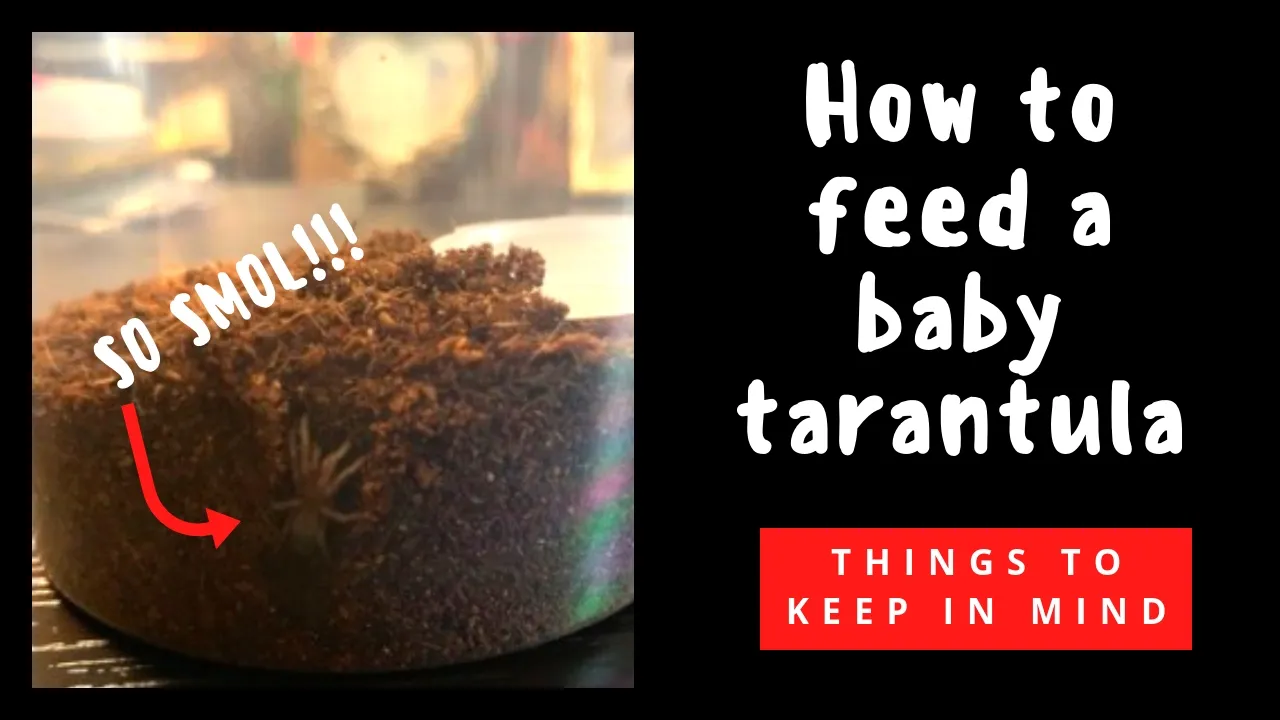
Feeding a baby tarantula is a rewarding experience. By understanding their dietary needs and following the guidelines outlined in this ultimate guide, you can ensure your spiderling thrives. Remember that consistency, observation, and attention to detail are key. Providing the right food at the right time will allow your baby tarantula to grow into a healthy, beautiful adult. Enjoy the fascinating journey of raising these amazing creatures, and continue to learn and adapt your care as your tarantula grows.
